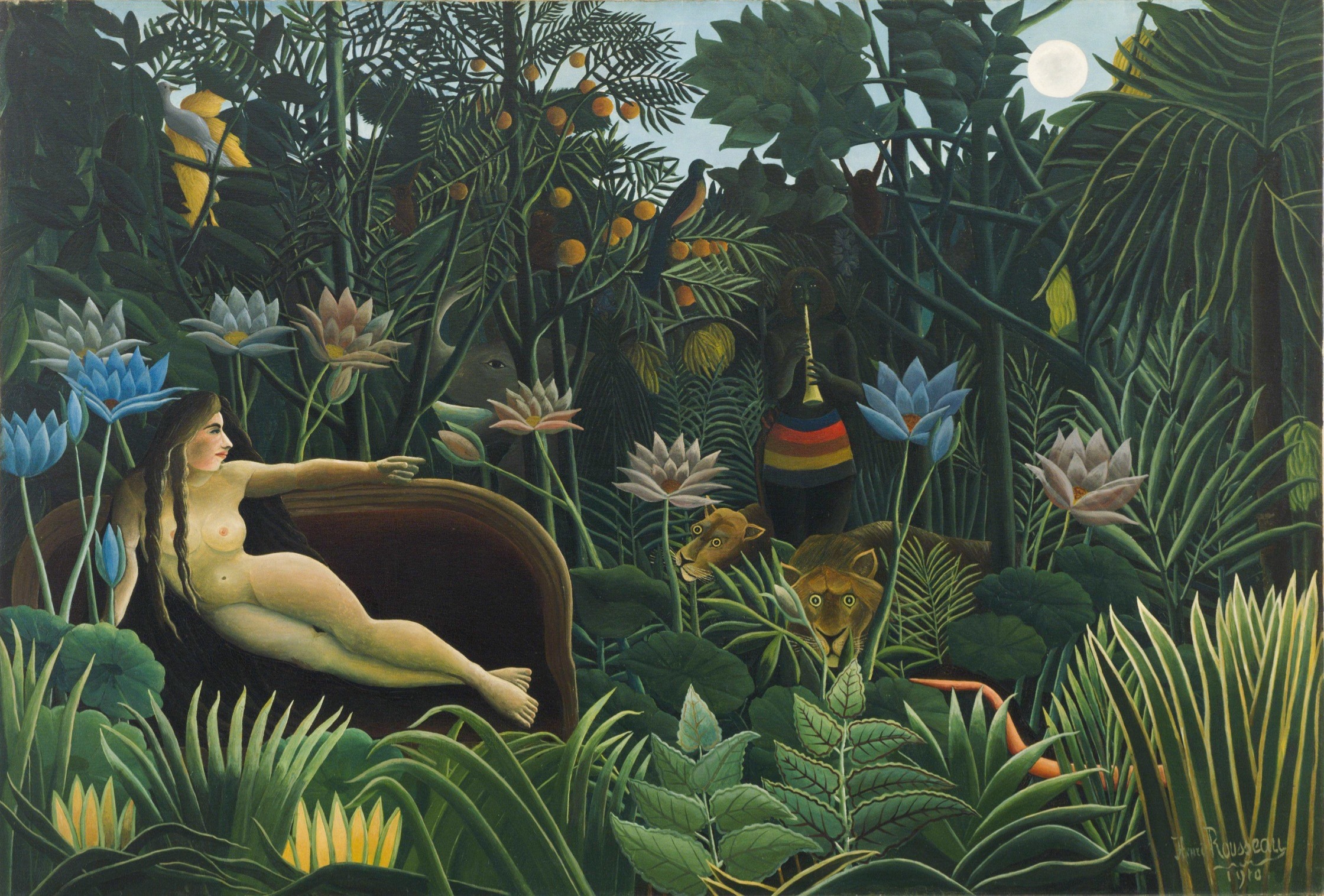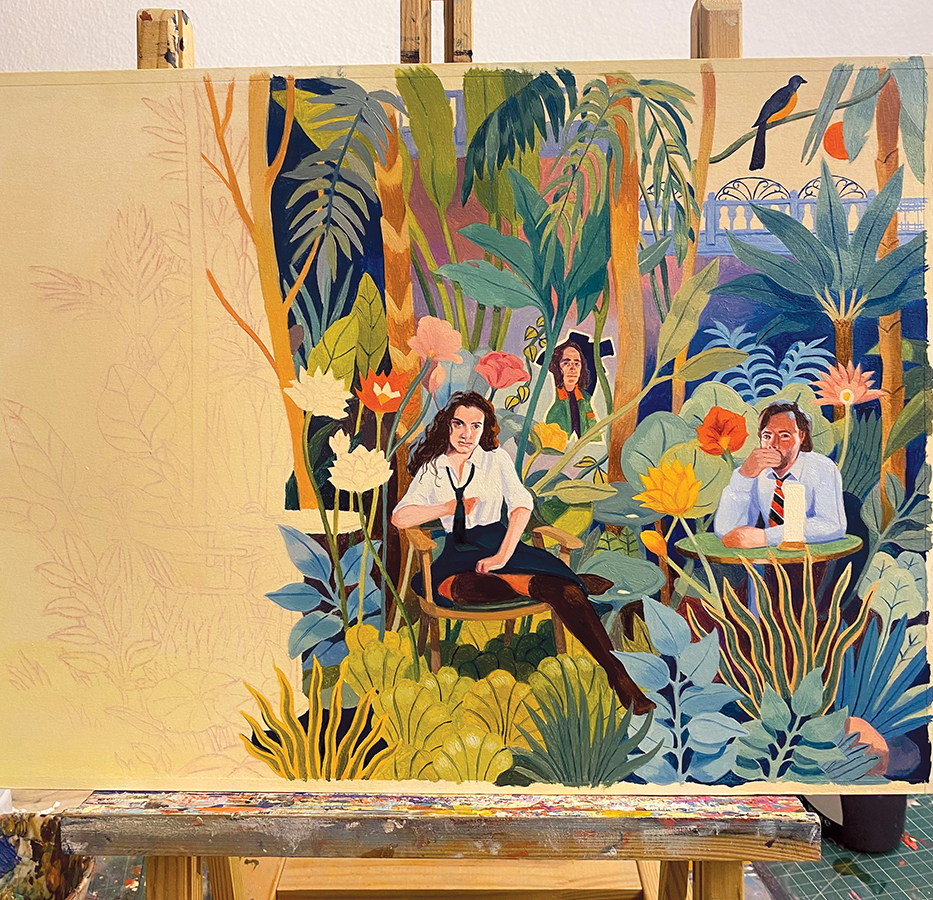The Artistic Synthesis That Gave Bloom to Our Exotica Cover

Entering the Exotica—the strip-club setting of Atom Egoyan’s seminal 1994 independent film of the same name—is like walking into a painting by Henri Rousseau. That’s no coincidence. The jungle fantasies of the French postimpressionist were a key visual influence for the intricately constructed, emotionally devastating drama, in which the traumas experienced by a grieving father (Bruce Greenwood), a young dancer (Mia Kirshner), and her jealous ex-lover (Elias Koteas) gradually come into focus. When it came time to create a cover for the new Criterion edition, Egoyan was quick to discuss the subject further.
“When we began to design the interior of the Exotica, we had Rousseau’s art in mind, and the title sequence of the film seems to be superimposed over one of his paintings—in fact, it’s the wall of the club,” Egoyan says. “What I am attracted to in Rousseau’s paintings is the strange fusion of naivete and expressionistic fervor. There’s something not quite right about his paintings, and yet they have a brusque power and seductive draw.” The filmmaker also saw a problematic aspect of the artist’s work—“he never ever visited a jungle; those images and textures are completely a product of his imagination, and thus they are filtered through a supremely presumptuous and ultracolonial point of view”—as resonating with the often damaging self-delusion of the characters populating Exotica.


A sketch of the cover art

In progress

The final cover art



